
Making candles at home? Yeah, we’ve been there – the joy, the excitement, the small fire we accidentally started that one time… It’s a mixed bag of experiences. The thing is, there’s a secret ingredient that we learned about a bit too late in our journey – the wax. Sounds obvious, right? But there are 7 options to choose from and each one carries a unique vibe, affecting your candle in ways you may not normally think about. So then, what’s the best wax for handmade candles?
The best wax for handmade candles varies by preference and intended use, however, paraffin, soy, and beeswax are three unique and popular options. For instance, paraffin wax has a clean burn and bright flame, soy wax is eco-friendly with a long burn time, yet lit beeswax naturally purifies the air.
We’ve been making candles using several waxes and techniques for nearly a decade now, and we can tell you if this is your first time you’ll soon appreciate how selecting the right wax can be the difference in crafting an experience instead of a piece of decor.
But, remember that each type of wax comes with its own mini rulebook. It’s like they’re all different characters in a game, with different skills, strengths, and yes, some annoying weaknesses. The fun part is figuring out which one’s your favorite player. It’s about understanding how they affect the burn time, scent throw, and even the safety of your candle-making process.
Now, we aren’t here to bore you with the technicalities, but this article will hit on the pros and cons of 7 different types of candle wax. Along the way, we’ll also answer several of the most burning questions for those just starting in candlemaking. Let’s begin.

1. PARAFFIN WAX: COMMON, HIGHLY SCENTED
Paraffin wax is an age-old contender in the realm of candle making. First brought to the candle market in the 1850s, it revolutionized the industry with its easy accessibility and affordability.
| Paraffin Wax | |
|---|---|
| Pros | Cons |
| Affordable: Paraffin wax is significantly cheaper compared to many other waxes due to its widespread availability and ease of production. | Health Concerns: There are potential health concerns associated with the use of paraffin wax, especially when inhaled in large quantities over an extended period. |
| Easy to Work With: Paraffin wax is simple to handle and manipulate, making it a popular choice for candle making. | |
| Variety of Scents and Colors: Paraffin wax can be easily dyed and scented, offering a broad range of customization options. | |
Paraffin wax is one of the most common materials used in candle making due to its affordability and versatility. It can display vibrant colors and holds fragrance very well, meaning candles made from paraffin can have strong, long-lasting scents. This makes it a common choice for decorative and aromatic candles. It’s not all rainbows and sunshine though…
What Wax Should You Avoid in Candles?
Paraffin wax should be avoided in candles. Derived from petroleum, it releases carcinogenic soot when burned, which can be harmful if inhaled and may contaminate indoor air quality. As a less environmentally friendly wax, it can harm both production and indoor air quality when burned.
BEST USED IN: Container Candles, Votives, Tealights
Paraffin wax’s flexibility makes it suitable for various types of candles. Its excellent scent throw and easy molding characteristics make it ideal for container candles, votives, and tealights.
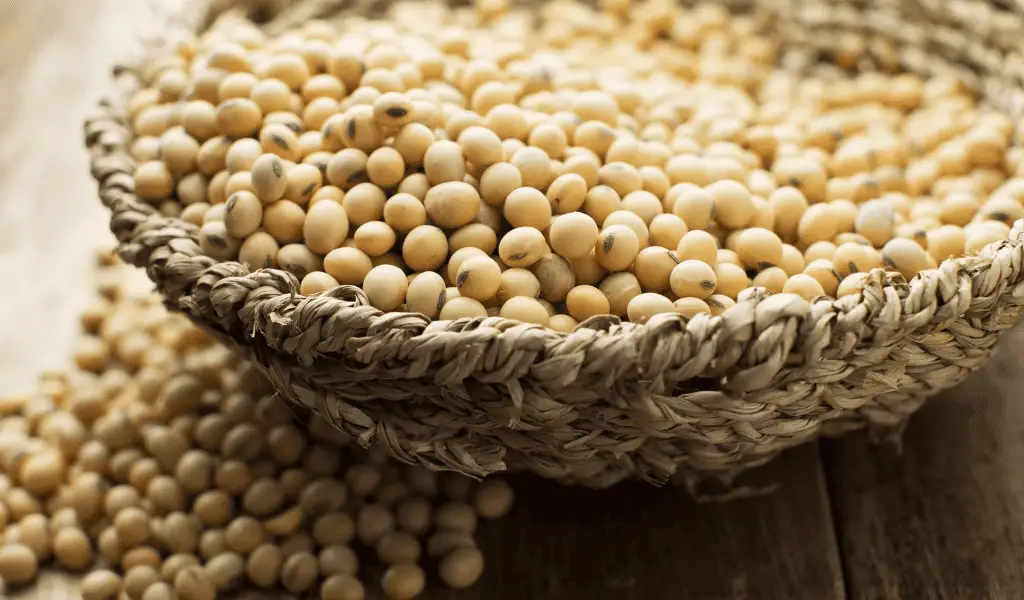
2. SOY WAX: ECO-FRIENDLY, SLOW-BURNING
Soy wax was introduced as an eco-friendly alternative to paraffin. It’s made from the oil of soybeans, making it a natural, renewable resource. It’s gained popularity amongst eco-conscious consumers and those sensitive to strong scents. Although a matter of personal preference, soy wax is our preferred wax base as well.
| Soy Wax | |
|---|---|
| Pros | Cons |
| Environmentally Friendly: Soy wax is a renewable resource and biodegradable, making it an environmentally friendly choice for candles. | Cost: Soy wax tends to be more expensive than paraffin wax due to the costs associated with its production and processing. |
| Longer Burning: Soy candles typically burn longer than paraffin candles, often making them a more cost-effective choice in the long run. | Frosting: Soy wax candles can sometimes develop a frosted appearance, which can impact the aesthetic appeal of the candle. |
| Healthier: Soy wax doesn’t produce harmful fumes when burned, making it a healthier choice compared to paraffin wax. | Scent Throw: Soy wax candles generally have a softer scent throw compared to paraffin wax candles, which may be a drawback for those who prefer strong scents. |
Soy candles are known to burn slower and cooler, often lasting 30-50% longer than their paraffin counterparts. However, they don’t hold heavy fragrances or colors as well as paraffin, which means they often have a more subtle scent profile, but they’re still able to maintain a decent scent throw. They’re best for someone who wants to enjoy long, relaxing evenings with a candle flickering in the background.
BEST USED IN: Container Candles
Soy wax has a lower melting point which makes it perfect for container candles. Its slower burn rate allows the scent to disperse gradually over time, ideal for a long-lasting container candle.
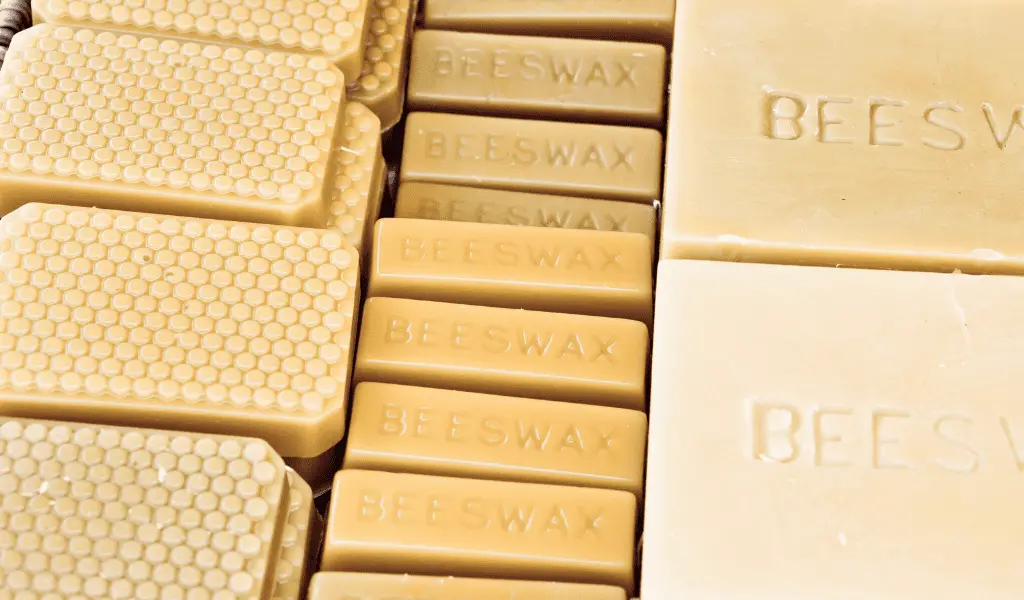
3. BEESWAX: NATURAL, HYPOALLERGENIC
Known for its sweet, natural fragrance, and non-toxic properties, beeswax is considered a high-end choice for candle-making. It’s often described as light, so it doesn’t overpower other fragrances, and it’s also hypoallergenic which is a big bonus for anyone with allergies or sensitivities. It’s naturally produced by honeybees (thank you bees!) and is revered for its air-purifying properties.
| Beeswax | |
|---|---|
| Pros | Cons |
| Natural and Safe: Beeswax is completely natural and non-toxic, making it a safe choice for candles. | Cost: Beeswax is one of the most expensive candle waxes due to the labor-intensive process of harvesting and purifying it. |
| Long Burning: Beeswax candles burn slower and last longer than both soy and paraffin wax candles, often making them more cost-effective over time. | Scent: Beeswax has a natural honey scent, which might not be desirable for all and can limit scent customization. |
| Neutralizes Pollutants: When burned, beeswax emits negative ions which can bind with toxins and help to improve air quality. | Hard to Work With: Beeswax can be more difficult to work with compared to other waxes as it has a high melting point and can be quite hard. |
Burning a beeswax candle releases negative ions that can bind with toxins and help improve air quality, and the flame is quite bright. The downside is its high cost compared to other waxes. However, the long burn time and air purifying benefits often make it worth the investment.
What Is the Healthiest Candle Wax to Burn?
The healthiest candle wax to burn is beeswax. It is a natural wax that burns cleanly, releases negative ions which can help purify the air, and has a longer burn time than other waxes
BEST USED IN: Tapers, Pillars, Votives
Beeswax is naturally hard and has a high melting point, making it suitable for freestanding candles like tapers and pillars. It can also be used for votives and is ideal for individuals looking for natural, hypoallergenic candles.
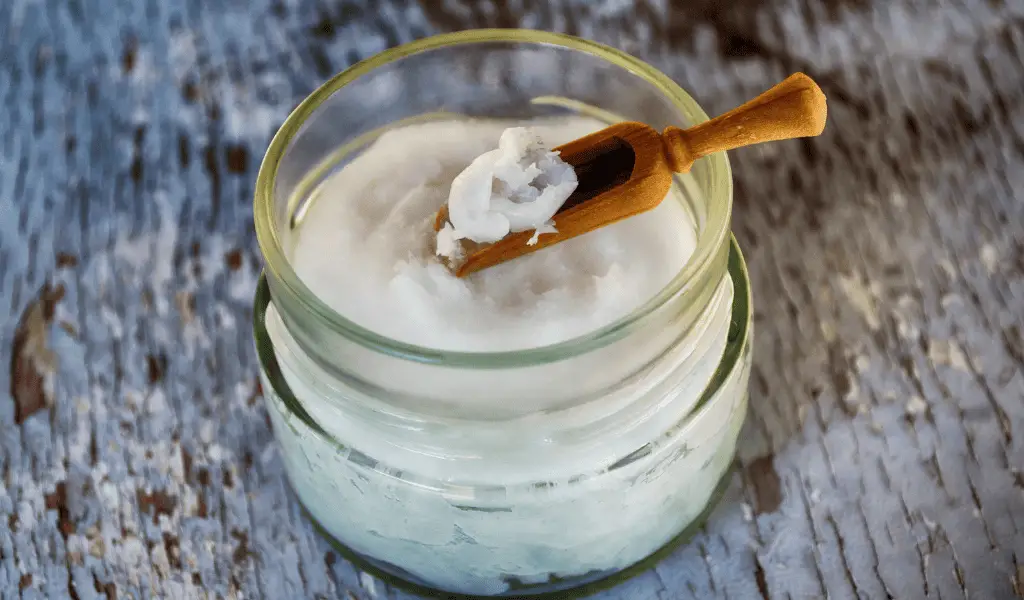
4. COCONUT WAX: PREMIUM, HIGH-QUALITY
Coconut wax is derived from the meat of the coconut formed into a creamy white wax. It’s praised for its slow, clean burn, and excellent fragrance throw – this is one of the reasons it’s often mixed with other waxes, as it helps enhance their qualities and make up for their shortcomings. Many luxury brands will use coconut wax due to its premium quality and dependability, holding scent, burning slowly, and burning cleanly.
| Coconut Wax | |
|---|---|
| Pros | Cons |
| Sustainable: Coconut wax is a sustainable and renewable resource, making it an environmentally friendly choice for candles. | Cost: Coconut wax is generally more expensive than other types of wax due to the costs involved in its production. |
| Excellent Scent Throw: Coconut wax holds scent extremely well, resulting in a great scent throw both cold and hot. | Availability: Coconut wax can sometimes be harder to source compared to more common waxes like soy and paraffin. |
| Burns Clean: Unlike paraffin wax, coconut wax does not release toxic fumes when burned. | Melting Point: Coconut wax has a low melting point which can lead to a softer candle, especially in warm climates or during shipping. |
While being more expensive than other types, coconut wax offers sustainability and renewability that can attract eco-conscious consumers. It also works great in hot and cold conditions, making it a versatile choice.
BEST USED IN: Container Candles
Like soy wax, coconut wax has a low melting point and burns slowly, which makes it excellent for container candles. It’s often found in luxury scented candles due to its excellent scent throw and quality.
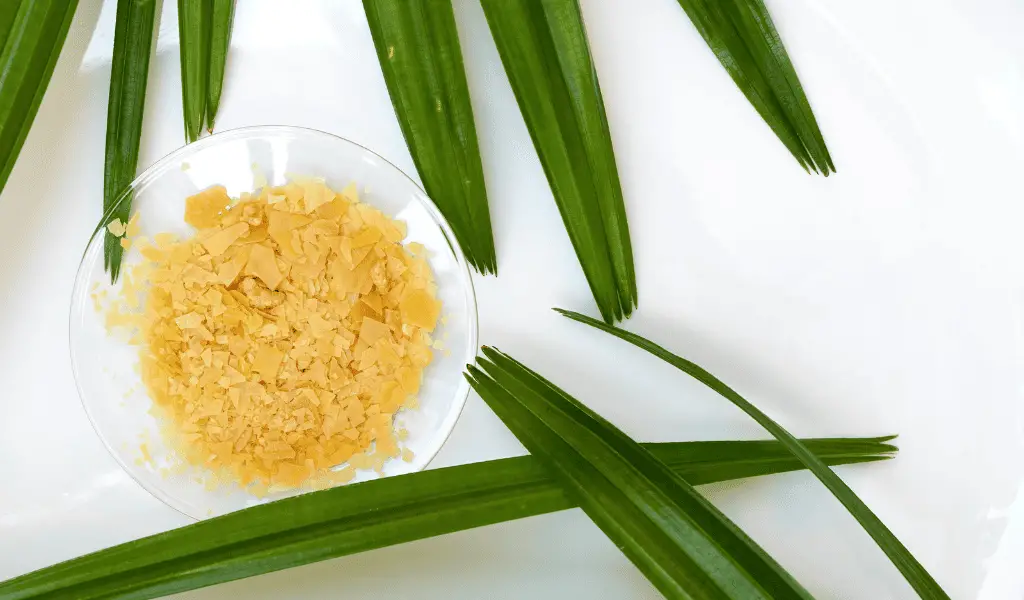
5. PALM WAX: DECORATIVE, HARD
Palm wax is another natural wax derived from palm oil. It’s recognized for its unique crystalline effect that gives the candle a sparkly, feather-like appearance. Palm wax candles are admired for their hard and durable texture, making them ideal for crafting pillar candles. They also have a high melting point which results in longer burn times.
| Palm Wax | |
|---|---|
| Pros | Cons |
| Long-Lasting: Palm wax burns slower and lasts longer than many other types of wax, offering a prolonged candle life. | Environmental Concerns: Although a natural product, the cultivation of palm oil, from which palm wax is derived, has led to significant deforestation and habitat destruction. |
| Unique Texture: Palm wax naturally crystallizes, resulting in a beautiful, unique texture that enhances the aesthetic appeal of candles. | Cost: Palm wax is generally more expensive than more common waxes like soy and paraffin. |
| Excellent Scent Throw: Palm wax has a great scent throw, making it a good choice for highly fragrant candles. | Hard to Work With: Due to its unique crystalline structure, palm wax can be more challenging to work with compared to other types of wax. |
Like soy and beeswax, it’s also a natural material that burns cleanly. However, it’s important to source sustainably produced palm wax due to the significant environmental concerns linked to palm oil production, such as deforestation and other habitat loss at the hands of palm plantations.
BEST USED IN: Pillars, Votives
Palm wax is a hard wax known for its crystalline structure. This makes it suitable for free-standing candles such as pillars or votives that showcase its unique texture and beauty.
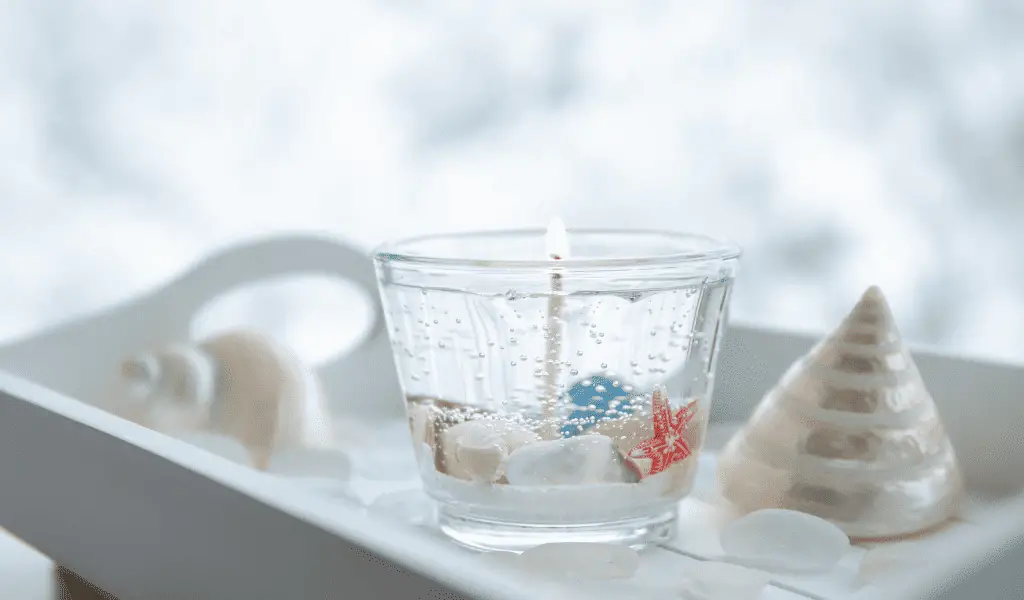
6. GEL WAX: TRANSPARENT, DECORATIVE
Gel wax isn’t wax at all but a form of mineral oil. It’s popular for its clear composition, providing an avenue for creative candle crafting. Gel wax allows for a variety of innovative candle designs, like embedding objects or creating oceanic themes – think of candles filled with glitter or small objects – this makes it most suited for novelty and gift candles.
| Gel Wax | |
|---|---|
| Pros | Cons |
| Unique Appearance: Gel wax allows for a unique, translucent appearance that other waxes can’t provide. | Cost: Gel wax is often more expensive than traditional wax types due to its unique characteristics. |
| Long-Lasting Burn: Candles made with gel wax often burn longer than those made with paraffin or soy wax. | Difficulty: Working with gel wax can be more difficult than traditional waxes, especially for beginners. |
| Strong Scent Throw: Gel wax is known for its strong scent throw, making it a great choice for highly fragrant candles. | Safety Concerns: Due to its nature, gel wax has a higher risk of flammability if not used correctly, and requires careful monitoring. |
Despite its unique appeal, gel wax holds less fragrance compared to other wax types. It also requires a specific type of wick and a careful heating process to prevent bubbles.
BEST USED IN: Container Candles
Gel wax is translucent and can be used to create visually striking container candles. You can embed decorative items into the wax, making it perfect for gift or novelty candles.
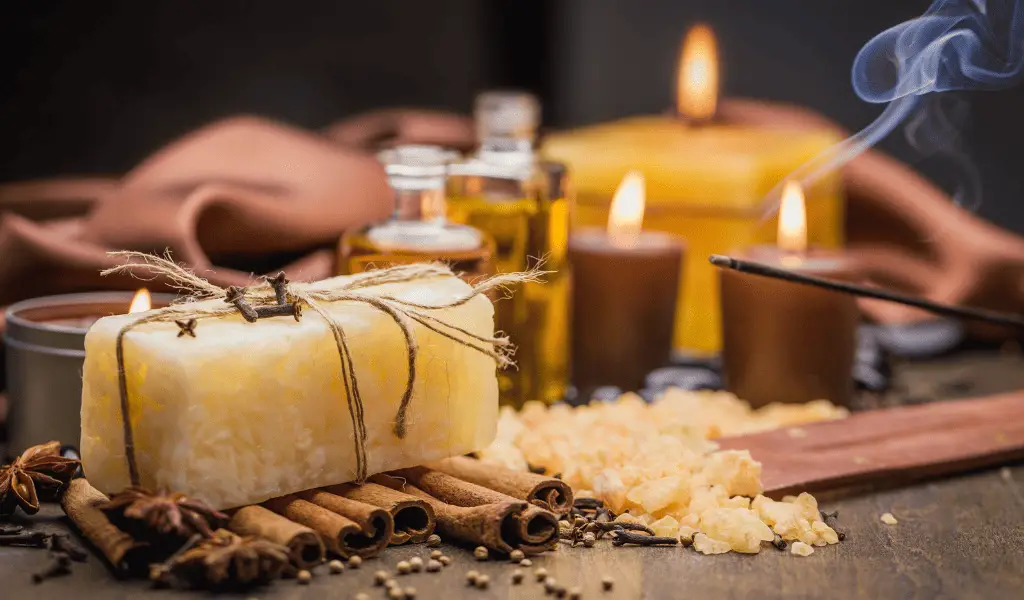
7. BLENDED WAX: CUSTOMIZABLE, BALANCED
In the candle industry, it’s common to blend different types of wax to get the best of each. For instance, paraffin and soy waxes are often mixed to combine the superior scent throw of paraffin with the slow, clean burn of soy wax. Or, you may find coconut wax added to give a luxurious feel to the candle.
Understanding the right temperature to melt soy wax or any other type of wax can help in creating the perfect blend.
| Blended Wax | |
|---|---|
| Pros | Cons |
| Versatile: Blended wax allows for a variety of characteristics to be combined, potentially offering the best properties of different waxes. | Inconsistent Quality: Quality can vary significantly depending on the specific blend, making it harder to ensure a consistent candle-making process. |
| Cost-Effective: By blending cheaper waxes with more expensive types, it’s possible to achieve a more cost-effective solution without sacrificing too much in terms of quality. | Unpredictability: Depending on the blend, the burn time, scent throw, and other properties may not be as predictable as with a single type of wax. |
| Customization: With blended wax, there’s potential for greater customization in terms of hardness, melt point, and other factors. | Unknown Composition: Unless specified by the supplier, the exact composition and proportion of the blend might be unknown, which could affect repeatability. |
Blending waxes allows for a customizable approach to candle making. By tweaking the proportions of each wax type, you can craft a candle that precisely meets your needs and preferences. It’s by far the most versatile option available since it can become whatever you like.
BEST USED IN: Various Types
Blended wax can be used for a variety of candle types. The specific blend of waxes used can be tailored to fit the requirements of different candles, be they container, tealight, votive, or pillar candles. See, we told you it was the best of all worlds.
You have a lot to consider now, but if you’re having an internal debate about whether to make or buy, keep reading.
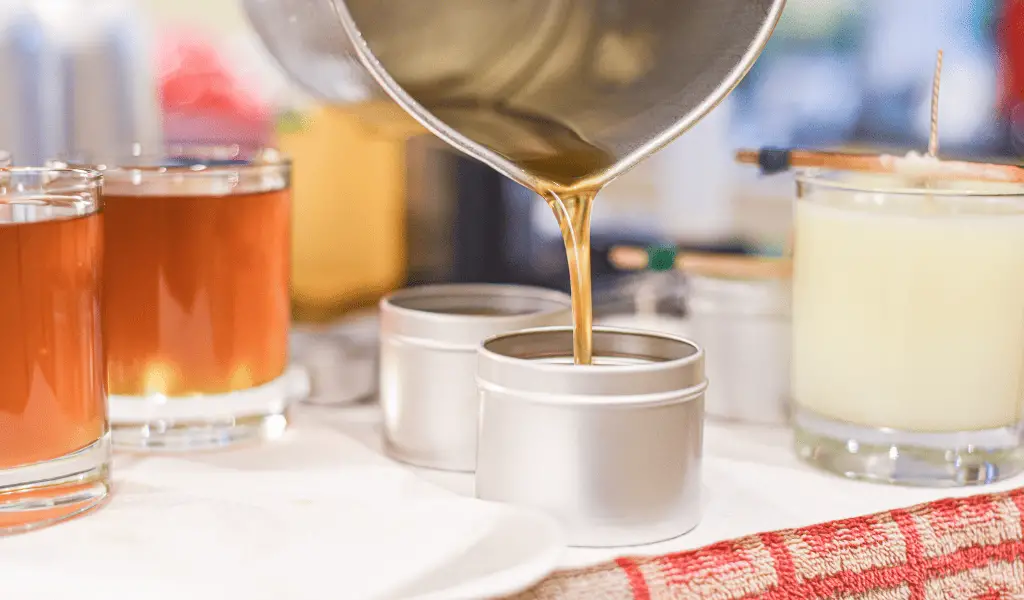
IS IT CHEAPER TO MAKE MY OWN CANDLES?
Yes, it is often cheaper to make your own candles. Buying supplies in bulk significantly reduces expenses, and it provides the added value of personalizing your candles.
Need some hard currency to back this up? We conducted a small study about the price of store-bought candles versus the cost of making similar candles at home. For a 22oz Yankee Candle, we found the average price to be around $30. If you spent $30 on premium supplies, you could make a yield of close to 77oz of candles. In other words, for the $30 you would spend on a Yankee Candle, you could make a comparable and customized candle for $8.57 yourself.
Alright, so it’s cheaper, but is it complicated to make candles? Surely there must be a ton of steps involved, right?
How Do I Make Homemade Candles?
To make candles at home, melt wax in a double boiler, add color and scent, fix a wick into a container, and pour the wax. This allows for personalized, unique creations.
While there are several micro-steps in between the major points above, the consensus is that making candles is simple, and a ton of fun to boot. Even our full tutorial on how to make candles, it’s just a total of 9 steps. Easy peasy. You also don’t need a ton of supplies to get started, and you also know that supplies are rather affordable.
WHAT MATERIALS ARE NEEDED TO MAKE CANDLES AT HOME?
Essential materials for making candles at home include wax, a double boiler, wicks, color dyes, fragrance oils, and containers. These items allow for customization and creativity. We recommend going with a kit as the prices are typically great and the value exchange is high.

Our favorite kit currently is the SoftOwl Premium Soy Candle-Making Kit, available from Amazon. It’s extremely comprehensive and has a wide range of scents, colors, and forms – if you want all the details on it, be sure to check out our thorough product review on the SoftOwl Candle Making kit and also check out our candlemaking tutorial which expands on the merits of this specific kit.
We also created a thorough guide to the top 5 candle making kits on the market that should be worth your time. No surprises – the SoftOwl kit is the #1 recommendation. But there are other considerations that might make one of the other kits better suited for your waxy needs.
As for individual items, here’s what we currently recommend:
WHAT ARE THE BEST OILS TO USE IN HOMEMADE CANDLES?
Essential oils like lavender, vanilla, or sandalwood are ideal for homemade candles due to their aromatic properties. Select based on your preference for a personal touch.
Depending on what you’re trying to create, your fragrance kitchen can be as simple or complex as you need. We recommend this amazing fragrance kit by Homkare – it includes 12 different essential oils that as standalone or as mixtures can create just about any sort of mood you like.

MAKING YOUR WAX CHOICE
Selecting the right candle wax depends on multiple factors including cost, burn time, fragrance strength, and environmental considerations. Whether you prefer the long-lasting, gentle scent of a soy wax candle, the rich aroma of a paraffin wax candle, or the air-purifying benefits of a beeswax candle, the choice ultimately comes down to personal preference.
Through this comprehensive guide, we hope you’ve uncovered what the best type of wax is for your upcoming candlemaking projects. As you delve deeper into the world of candle making, this knowledge will illuminate your journey (like our puns?), helping you make informed decisions that align with your unique needs and values. Be sure to join our newsletter to stay up-to-date on our latest articles.
Until then, Happy Hobbying!

